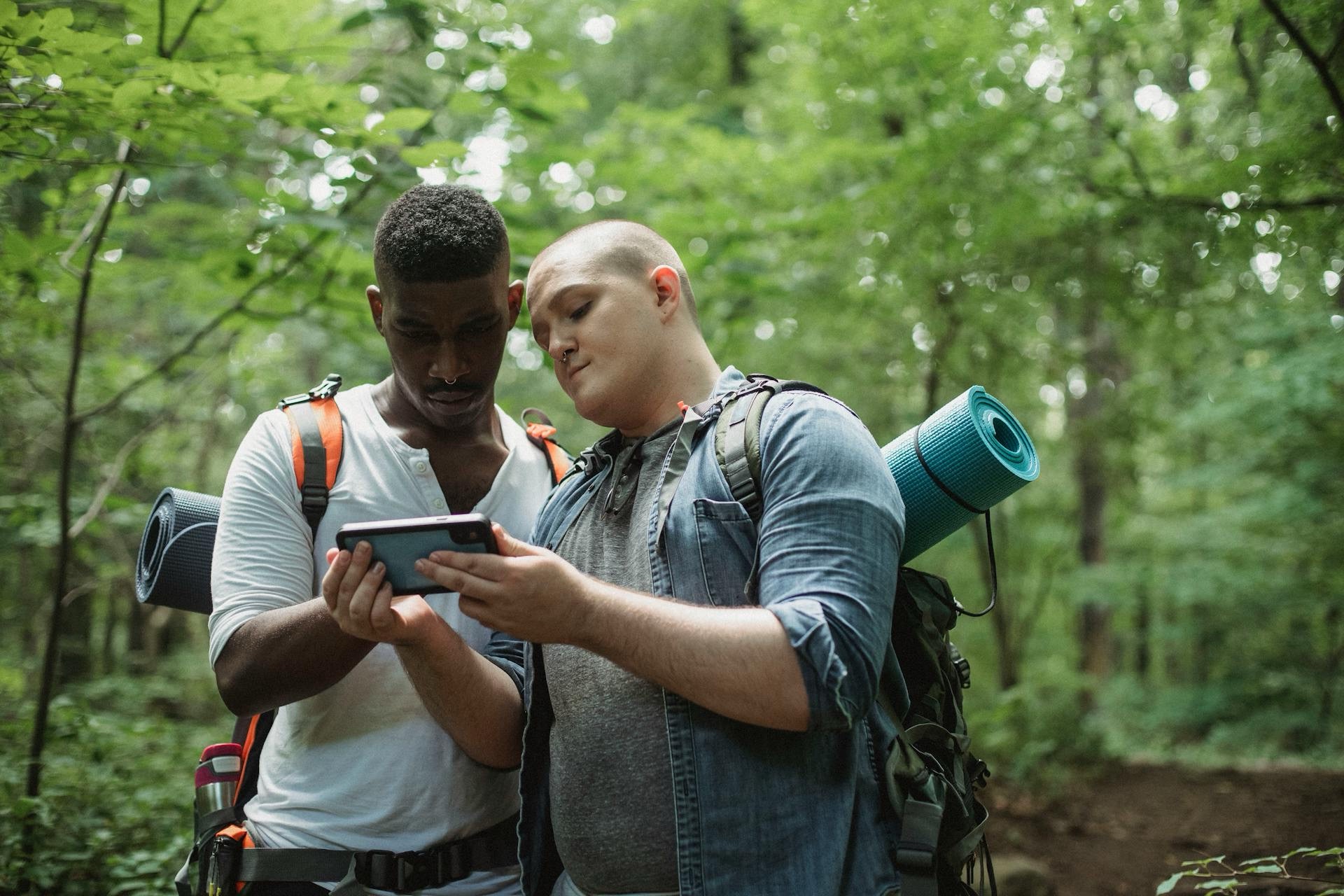Geocaching is a modern-day treasure hunt that combines outdoor adventure with technology, allowing participants to use GPS devices or smartphones to find hidden containers, known as “geocaches” or “caches,” placed by other players. These caches are hidden in various locations, from urban settings to remote wilderness areas, offering a fun and engaging way to explore new places while solving clues and puzzles. Geocaching is an activity enjoyed by individuals, families, and groups of all ages. It combines physical activity, problem-solving, and exploration, making it a popular choice for outdoor enthusiasts and those looking for a unique and adventurous hobby.
How Geocaching Works
1. The Geocache
A geocache is typically a small waterproof container that includes a logbook for finders to sign and sometimes small trinkets or toys for trading. Caches can vary in size, from tiny containers no bigger than a film canister (often called “micro” caches) to larger boxes or even creatively camouflaged objects. Each geocache has a unique location, and its coordinates are shared on geocaching websites or apps so players can search for it.
Imagine stumbling upon a cleverly disguised geocache that looks like part of a tree branch or a fake rock hiding in plain sight. The creativity involved in hiding and finding these caches adds an extra layer of excitement to the game.
2. GPS Coordinates
Each geocache has its exact location listed as GPS coordinates (latitude and longitude), which players use to find the hidden cache. By entering these coordinates into a GPS device or smartphone app, players can navigate to the general area where the cache is hidden. The coordinates will guide you to a relatively close spot, but you may still need to search carefully in that area, as some caches are cleverly concealed.
For instance, you might find yourself standing at the coordinates, only to realize the cache is hidden under a bench or tucked into a crevice in a nearby wall. Always remember, the final few meters are often where the real challenge begins.
3. Online Platforms
Geocaching is facilitated through online platforms, with the most popular being Geocaching.com and its official app. These platforms allow users to search for geocaches near their location, log their finds, and share experiences with other geocachers. Players can also create and hide their own caches for others to find.
These platforms are the heart of the geocaching community, offering forums, event listings, and even challenges to help you hone your skills. Joining these communities can enhance your geocaching experience by connecting you with fellow enthusiasts and providing valuable insights into creating and finding caches.
How to Play Geocaching
1. Sign Up on a Geocaching Website or App
To get started, you’ll need to create an account on a geocaching platform like Geocaching.com. The basic membership is usually free, though premium memberships offer additional features such as access to exclusive caches and advanced search tools.
Creating an account is as simple as setting up a social media profile. Once you’re signed up, you’ll gain access to a map filled with hidden treasures waiting to be discovered.
2. Find a Cache to Search For
Once you’ve signed up, you can search for geocaches in your area using the website or app. Geocaches are listed with difficulty ratings, terrain levels, and the size of the cache, so you can choose one that fits your experience level and preference. Beginners often start with easier caches located in accessible, public areas.
If you’re new, look for caches with a low difficulty and terrain rating. A 1/1 cache is a great starting point—it’s usually in plain sight and doesn’t require special equipment or extensive hiking.
3. Use GPS to Navigate to the Cache
Enter the geocache’s coordinates into your GPS device or app and start navigating to the location. GPS will typically guide you within a few meters of the cache, but once you’re close, you’ll need to rely on your observational skills to locate the hidden container. Be prepared to search under rocks, in tree hollows, or behind bushes—caches are often well-concealed to blend into their surroundings.
One of the most rewarding aspects of geocaching is the “Aha!” moment when you finally spot the cache. It might be a small container tucked into a knot in a tree or a larger box hidden beneath a pile of stones.
4. Find the Cache
Once you’ve located the cache, open it and sign the logbook with your username and the date. Some caches contain small trinkets or items for trading—if you take something from the cache, it’s good etiquette to leave something of equal or greater value in return. This keeps the geocaching experience fun for the next finder.
Consider carrying small, inexpensive items like keychains or pins for trading. This adds an element of surprise and joy for future finders, keeping the community spirit alive.
5. Log Your Find
After you’ve found the cache and signed the logbook, you can log your find on the geocaching app or website. Many geocachers also share notes about their experience, offer hints for future searchers, or post photos of the location (without giving away the exact hiding spot). Logging your find helps maintain the integrity of the game and allows cache owners to keep track of their hidden treasures.
Logging online is also a way to track your progress and see how many caches you’ve found over time. It becomes a digital diary of your adventures, complete with stories and photos.
6. Hide Your Own Cache (Optional)
Once you’ve gained some experience, you may choose to hide your own geocache for others to find. Make sure to select a location that is safe and respectful of the environment, and follow any local laws or regulations. You’ll need to create a listing with accurate coordinates and provide hints or clues to help others locate your cache.
When hiding a cache, think creatively about its placement and camouflage. The more imaginative and thoughtful your hiding spot, the more rewarding it will be for others to find.
Types of Geocaches
There are several different types of geocaches, each offering a unique challenge for players:
- Traditional Cache: The most straightforward type, where the cache is hidden at the exact GPS coordinates provided.
- Multi-Cache: Involves finding two or more locations. The coordinates of the first location lead you to clues that point to the next location, and so on, until you find the final cache.
- Mystery/Puzzle Cache: Requires solving a puzzle or completing a challenge to determine the final coordinates. These caches are often more complex and require additional problem-solving.
- EarthCache: A special type of cache that teaches players about a geological feature or process. Instead of finding a physical container, you answer questions about the location to log your find.
Each type of cache offers its own unique rewards and challenges. Mystery caches, for example, are great for those who love solving riddles, while EarthCaches can be educational, offering insights into the natural world.
Benefits of Geocaching
1. Exploration and Adventure
Geocaching takes you to places you may never have explored otherwise. From scenic nature trails to hidden gems in urban areas, geocaching encourages you to discover new locations and enjoy the thrill of the hunt.
For example, you might find yourself wandering through a historic district, learning about local architecture, or hiking a trail with breathtaking views that you didn’t know existed.
2. Physical Exercise
Geocaching gets you outdoors and moving. Whether you’re walking through a city park or hiking up a mountain trail, geocaching provides a fun way to get physical exercise without it feeling like a chore.
You can tailor your geocaching activities to fit your desired level of physical exertion. Choose a leisurely walk in a local park or challenge yourself to a strenuous hike in a mountainous area.
3. Mental Stimulation
Finding a well-hidden geocache often requires creativity, problem-solving, and careful observation. Puzzle caches, in particular, challenge your critical thinking and logic, adding an intellectual element to the game.
The mental challenge keeps your mind sharp, as you must decode riddles, solve puzzles, or interpret cryptic clues to reach your goal.
4. Social Interaction
Geocaching can be a solo activity or enjoyed with friends and family. Many people participate in geocaching events, where they meet fellow enthusiasts, swap tips, and tackle group challenges. It’s also a great way for couples or families to bond while engaging in a shared adventure.
These events often include community activities like cache-in-trash-out (CITO), where geocachers help clean up natural areas, combining environmental stewardship with the sport.
5. Connection with Nature
Geocaching often takes players to beautiful natural areas, encouraging people to spend more time outside and appreciate the environment. Many caches are hidden in parks, forests, or near water, offering scenic views and a peaceful escape from the everyday.
This connection with nature can be therapeutic, reducing stress and promoting a sense of well-being.
Practical Tips for Geocachers
1. Prepare Your Equipment
Always ensure your GPS device or smartphone is fully charged before setting out. Consider carrying a portable charger, especially if you plan to be out for a long time. Pack a small bag with essentials like water, snacks, a pen for signing logbooks, and any tools you might need based on the cache description.
2. Dress Appropriately
Wear comfortable clothing and sturdy shoes suitable for the terrain you’ll be exploring. Layers are a good idea in variable weather conditions, and don’t forget sun protection like hats and sunscreen.
3. Respect the Environment
Leave no trace. Be mindful of the environment, and avoid disturbing wildlife or damaging vegetation. If you notice litter, pick it up and dispose of it properly. This practice helps maintain the natural beauty of the areas you explore.
4. Safety First
Always prioritize safety. Let someone know your plans, especially if you’re heading to a remote location. Carry a basic first-aid kit, and be aware of your surroundings to avoid hazards like steep drops, slippery surfaces, or unstable ground.
5. Hone Your Skills
Practice makes perfect. The more you geocache, the better you’ll become at spotting potential hiding spots and solving puzzles. Start with easy caches and gradually tackle more challenging ones as your confidence grows.
Expanding Your Geocaching Horizons
1. Travel and Geocaching
Combine travel with geocaching for a unique way to explore new destinations. Many cities and countries have rich geocaching communities with caches that highlight local history, culture, and natural beauty.
2. Geocaching Challenges
Participate in geocaching challenges, such as finding caches in every state or country you visit, or completing a certain number of caches within a set time frame. These challenges add an extra layer of motivation and achievement.
3. Collaborate with Others
Join local geocaching groups or online forums to connect with other enthusiasts. Sharing tips, stories, and experiences can enrich your geocaching journey and introduce you to new friends with similar interests.
Geocaching is a rewarding and multifaceted hobby that combines adventure, exercise, and learning. With each cache you find, you’re not just discovering a hidden object, but also uncovering a world of exploration and community. So, grab your gear, check your coordinates, and set out on a journey that promises excitement, discovery, and endless possibilities.




